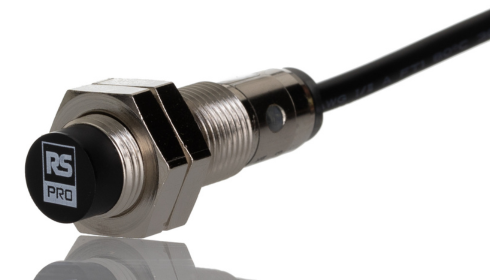
Proximity Sensor: An Essential Electronics Component
Admin
- 0
In today’s fast-evolving world of technology, electronics components play a pivotal role in building smart and efficient systems. Among these components, the proximity sensor has emerged as a critical element in numerous applications, ranging from smartphones to industrial automation. Understanding what a proximity sensor is, how it works, and its applications can help engineers, hobbyists, and tech enthusiasts leverage its potential effectively.
What is a Proximity Sensor?
A proximity sensor is a device that detects the presence or absence of an object without any physical contact. Unlike traditional switches, which require direct touch to operate, proximity sensors can sense objects from a certain distance. This ability makes them highly useful in environments where contact-based detection is impractical or undesirable.
These sensors are widely used in electronics to automate processes, enhance safety, and improve efficiency. By incorporating proximity sensors, devices can respond intelligently to the presence of objects or human interaction, creating a seamless and futuristic user experience.
How Does a Proximity Sensor Work?
Proximity sensors operate using different technologies depending on their type. The most common types include:
- Inductive Proximity Sensors: These sensors detect metallic objects by generating an electromagnetic field. When a metal object enters this field, the sensor senses a change and triggers a response. This type is widely used in manufacturing and assembly lines.
- Capacitive Proximity Sensors: Capacitive sensors can detect both metallic and non-metallic objects, including liquids. They work by measuring changes in capacitance caused by the proximity of an object. These sensors are common in touch panels and level sensing applications.
- Ultrasonic Proximity Sensors: Using sound waves, ultrasonic sensors measure the distance to an object. They emit high-frequency sound waves and detect the reflection from nearby objects. This technology is popular in robotics, parking sensors, and automation systems.
- Infrared (IR) Proximity Sensors: IR sensors use infrared light to detect objects. They are often used in mobile devices, automatic doors, and consumer electronics for motion detection and gesture recognition.
The choice of sensor depends on factors like the type of object, detection distance, environmental conditions, and the specific application.
Applications of Proximity Sensors
Proximity sensors have found their way into numerous sectors due to their versatility:
- Consumer Electronics: Smartphones and tablets use IR or capacitive proximity sensors to detect when a user is holding the device, automatically turning off the screen during calls to prevent accidental touches.
- Automotive Industry: Vehicles rely on ultrasonic and capacitive sensors for parking assistance, collision avoidance, and automated braking systems.
- Industrial Automation: Proximity sensors ensure safety and precision in assembly lines, conveyor belts, and robotic arms.
- Security Systems: These sensors are used in alarm systems to detect unauthorized entry or movement in restricted areas.
- Healthcare Equipment: Proximity sensors enhance the functionality of medical devices, such as automatic hand sanitizers and patient monitoring systems.
Advantages of Using Proximity Sensors
Proximity sensors offer several benefits that make them indispensable in modern electronics:
- Non-contact Detection: Since there is no physical contact, wear and tear are minimized, increasing the lifespan of the device.
- High Precision: These sensors provide accurate detection and rapid response, making them ideal for automated systems.
- Versatility: They can detect a wide range of objects, including metals, liquids, and even human presence.
- Enhanced Safety: By avoiding physical interaction, they reduce the risk of accidents in industrial and consumer applications.
Conclusion
Proximity sensors are a crucial element in the world of electronics components, offering innovative solutions across industries. Their ability to detect objects without contact, combined with high accuracy and versatility, makes them indispensable for modern devices and automated systems. Whether in consumer electronics, automotive, healthcare, or industrial sectors, proximity sensors continue to drive advancements in technology, making processes safer, faster, and more efficient. As technology progresses, these sensors will likely become even more integrated into our daily lives, proving that even small components can have a big impact.


